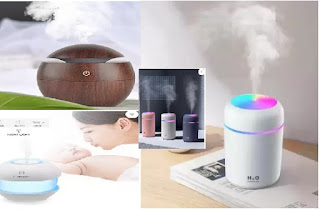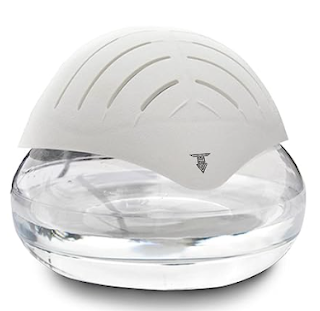Whole-Home Air Purifiers:
Elevating Indoor Air Quality
for a Healthy Living Environment
 |
| Whole-Home Air Purifiers |
Introduction:
In our quest for a healthy living environment, whole-home
air purifiers have emerged as a powerful solution to improve indoor air
quality. Unlike portable air purifiers that cater to a single room, whole-home
air purifiers are integrated into the HVAC system, purifying the air throughout
the entire home. In this comprehensive article, we will delve into the world of
whole-home air purifiers, exploring their benefits, operation, filtration
technologies, installation, maintenance, and their significant impact on
creating a clean and healthy indoor environment for you and your family.
Importance of Indoor Air Quality:
Indoor air quality plays a crucial role in our overall
well-being, considering that we spend a significant portion of our lives
indoors. Unfortunately, indoor air can harbor numerous pollutants, including
dust, pet dander, pollen, mold spores, volatile organic compounds (VOCs), and
even bacteria and viruses. Prolonged exposure to these contaminants can lead to
allergies, respiratory issues, and other health problems. Whole-home air purifiers
offer an effective solution to combat these pollutants and enhance indoor air
quality.
Integration with HVAC Systems:
Whole-home air purifiers are designed to work in tandem
with the home's HVAC system. They are typically installed in the return air
duct or the air handler, allowing them to treat the air before it is
distributed throughout the house. By leveraging the existing ductwork and
airflow, whole-home air purifiers ensure that purified air reaches every room
of the house, providing comprehensive coverage.
 |
| Whole-home air purifiers |
Filtration Technologies:
Whole-home air purifiers employ advanced filtration
technologies to capture and remove airborne particles and pollutants. The most
common and highly effective filtration system utilized is the High-Efficiency
Particulate Air (HEPA) filter. HEPA filters can trap particles as small as 0.3
microns with an efficiency rate of 99.97%. These filters effectively capture
dust, pollen, pet dander, mold spores, and other harmful particles, improving
indoor air quality significantly. Additionally, some models may incorporate
activated carbon filters to adsorb odors, VOCs, and chemicals, enhancing the overall
air purification process.
Purification Process:
As air is drawn into the HVAC system, it passes through
the whole-home air purifier. The pre-filter captures larger particles such as
dust and pet hair, extending the life of the primary filter. The HEPA filter,
the core component, efficiently traps microscopic particles, allergens, and
pollutants. The activated carbon filter, if present, adsorbs odors, chemicals,
and VOCs. Together, these filters work synergistically to ensure that the air
circulated throughout the house is clean, fresh, and free from harmful
contaminants.
Benefits of Whole-Home Air Purifiers:
Improved Indoor Air Quality: By effectively
capturing and removing airborne pollutants, whole-home air purifiers
significantly improve indoor air quality. They reduce the presence of
allergens, such as pollen and pet dander, providing relief to allergy
sufferers. Additionally, they remove dust and mold spores, creating a cleaner
and healthier living environment.
Comprehensive Coverage: Unlike portable air
purifiers, whole-home systems provide comprehensive coverage, ensuring that
purified air reaches every room in the house. This eliminates the need for
multiple devices and ensures consistent air purification throughout the entire
living space.
Odor Reduction: Whole-home air purifiers equipped
with activated carbon filters effectively remove odors from the air. They
neutralize unpleasant smells originating from cooking, pets, tobacco smoke, and
other sources, creating a fresher and more pleasant indoor environment.
Respiratory Health Benefits: Cleaner air provided
by whole-home air purifiers can benefit individuals with respiratory conditions
such as asthma and chronic obstructive pulmonary disease (COPD). By removing
allergens and irritants, these systems can alleviate symptoms, reduce
flare-ups, and promote better respiratory health.
 |
| air purifiers |
Protection Against Airborne Pathogens: Whole-home
air purifiers play a crucial role in reducing the spread of airborne viruses
and bacteria. By capturing and eliminating these pathogens, they help create a
safer living environment, especially during flu seasons or pandemics.
Energy Efficiency: Whole-home air purifiers are
integrated into the HVAC system and operate alongside it, resulting in
energy-efficient performance. They do not require separate power sources or
consume excessive electricity, making them a cost-effective solution for
long-term air purification.
Installation and Maintenance:
Installation of whole-home air purifiers typically
requires professional assistance to ensure proper integration with the HVAC
system. An HVAC technician will assess the existing setup, determine the best
location for installation, and ensure proper airflow and filtration efficiency.
Regular maintenance is crucial for optimal performance. This includes periodic
filter replacement or cleaning, in accordance with the manufacturer's
recommendations, to maintain the system's effectiveness.
Conclusion:
Whole-home air purifiers are a valuable investment for
those seeking to create a clean and healthy indoor environment. By integrating
with the HVAC system, these systems ensure comprehensive air purification
throughout the entire home. With advanced filtration technologies, they
effectively capture and remove airborne particles, allergens, odors, and
pathogens. Improved indoor air quality not only promotes better respiratory
health but also enhances overall well-being. Consultation with an HVAC
professional can help determine the most suitable whole-home air purifier for
your specific needs, ensuring that you and your family can breathe easier in a
clean and healthy home environment.

0 comments:
एक टिप्पणी भेजें
Please donot push any spam here.